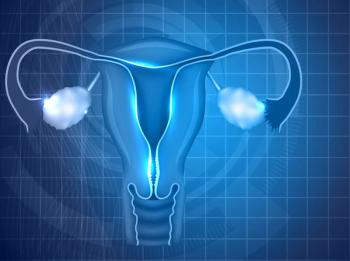
Chemotherapy Induces Molecular Changes in High-Grade Serous Ovarian Carcinoma
Molecular expression analysis found that high-grade serous ovarian carcinomas exhibit significant alterations to cell cycle genes, DNA damage genes, and other pathways following treatment with neoadjuvant chemotherapy.
Molecular expression analysis found that high-grade serous ovarian carcinomas exhibit significant alterations to cell cycle genes, DNA damage genes, and other pathways following treatment with neoadjuvant chemotherapy (NACT).
“High-grade serous carcinoma [HGSC] has a high degree of heterogeneity,” wrote study authors led by Rebecca C. Arend, MD, of the University of Alabama at Birmingham, in a
The new study was designed to evaluate those genetic variations in ovarian HGSC, as well as to assess the utility of using cell-free DNA (cfDNA) to monitor changes in gene expression. A total of 19 patients with a median age of 74 years had plasma drawn and underwent a tissue biopsy at the time of diagnosis, followed by 3 to 6 cycles of NACT, after which plasma was drawn again and patients underwent resection.
Among the most commonly mutated pathways from before to after NACT were immune signaling, cell proliferation, and cell-to-cell signaling. The most frequently upregulated genes were NR4A3 (P = 4 × 10-6), NR4A1 (P = 2 × 10-5), THBS4 (P = 6 × 10-3), SFRP2 (P = 1 × 10-2), and others. Commonly downregulated genes included E2F1 (P = .002), BRCA2 (P = .003), TTK (P = .002), and several others.
There were some differences with regard to which mutations were found more commonly in tumor samples and in plasma. For example, in the pre-NACT samples, TP53 mutations were more common in tumor than in plasma, while plasma samples showed a wider range of infrequently mutated genes, including ERBB4, ATM, BRAF, and others. After NACT, most of the mutations found in cfDNA did not persist (6 of 57 found pre-NACT); in contrast, 33 of 38 mutations in tumor DNA remained unchanged after NACT.
In spite of those differences, Arend said the study showed the feasibility of using plasma to identify tumor mutations, and the increased mutational diversity in NACT may provide a more complete picture of genetic changes. “Understanding the effect of chemotherapy on gene expression profiles may help guide therapy,” Arend noted in her presentation. “Plasma cfDNA could provide a non-invasive approach of monitoring tumor mutations.”
Newsletter
Stay up to date on recent advances in the multidisciplinary approach to cancer.















































































